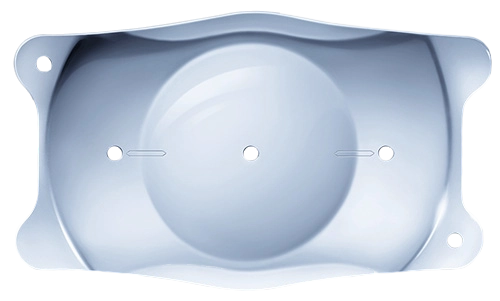
EVO ICL™
Since each person’s eyes are unique, LASIK surgery is not always the best option for vision correction. A great alternative to LASIK is the EVO ICL™ procedure. Patients with dry eyes, thin corneas, or a prescription that is out of range for LASIK may be great candidates for EVO ICL™ (Implantable Collamer Lens). For those with astigmatism in addition to myopia, the EVO Toric ICL is specifically designed to help improve their sight and correct blurriness. With the EVO ICL™ procedure, qualified patients can achieve high-definition vision while significantly reducing – or even eliminating – their dependency on prescription eyewear.
What Is the EVO ICL™?
The EVO ICL™ allows the eye to focus through the natural lens with the help of an additional, surgically implanted lens. This artificial lens can enhance the quality of your vision, correct a number of common refractive errors or eye conditions, and avoid the hassle and maintenance of traditional contact lenses. (However, the EVO ICL™ cannot be used to correct farsightedness.) With the artificial lens strategically placed behind the eye’s iris and in front of the natural lens, the result of the EVO ICL™ procedure is significantly improved eyesight, including better night vision, with a completely natural appearance. As an added benefit, the procedure is completely reversible.

What Is the EVO Toric ICL?
The EVO Toric ICL works in a similar way to the EVO ICL™ as it is implanted behind the iris and in front of the eye’s crystalline lens to improve nearsightedness. The EVO Toric ICL is a newer version of the original ICL™ that is FDA-approved for correcting nearsightedness with higher levels of astigmatism. Patients who were not previously candidates for the EVO ICL™ procedure may be eligible for the procedure using the toric lens, which has been designed for correcting vision in irregularly shaped corneas.

Am I a Candidate for the EVO ICL™ or EVO Toric ICL?
Ideal candidates for the EVO ICL™ are generally those who are between the ages of 21 and 45 and have mild to severe nearsightedness. The EVO Toric ICL may be recommended for those with astigmatism. Additionally, candidates for EVO ICL™ and EVO Toric ICL should have maintained the same vision prescription for at least a year and cannot have undergone any previous ophthalmic surgeries. Patients should not be pregnant, and they should have relatively healthy eyes with no signs of glaucoma, iritis, diabetic retinopathy, or other ocular conditions.
EVO ICL™ & EVO Toric ICL Technology
The EVO ICL™ is made of a biocompatible material called Collamer®. In addition to improving the quality of your vision, this advanced lens material can filter ultraviolet light to help protect your eyes from the sun’s harmful rays. The EVO ICL™ is an updated version of the original ICL™ that allows the lens to be implanted without the need for a peripheral iridotomy, which is a small hole traditionally made in the iris.
For patients who experience a dramatic change in the quality of their natural eyesight after the EVO ICL™ procedure, the implantable lenses can be exchanged and updated to accommodate for this change. As an alternative, EVO ICL™ patients are able to wear glasses or contact lenses should additional vision correction become necessary.


The EVO ICL™ & EVO Toric ICL Procedure
To begin the procedure, a mild sedative and anesthetic eye drops can be used to help ensure you remain as relaxed and comfortable as possible throughout treatment. The EVO ICL™ or EVO Toric ICL is then carefully inserted into position behind the iris and in front of your natural lens. The procedure is typically performed one eye at a time (on the same day), taking approximately 20 to 30 minutes, and a noticeable improvement in vision is generally apparent right away.
The following day, you will need to return to the office so your doctor can monitor the health of your eye and the success of the procedure. You will be prescribed eye drops to help facilitate the healing process, but recovery and time away from regular activities is minimal.
The doctors at Nevada Eye Consultants have approved this content.
Page Updated:

